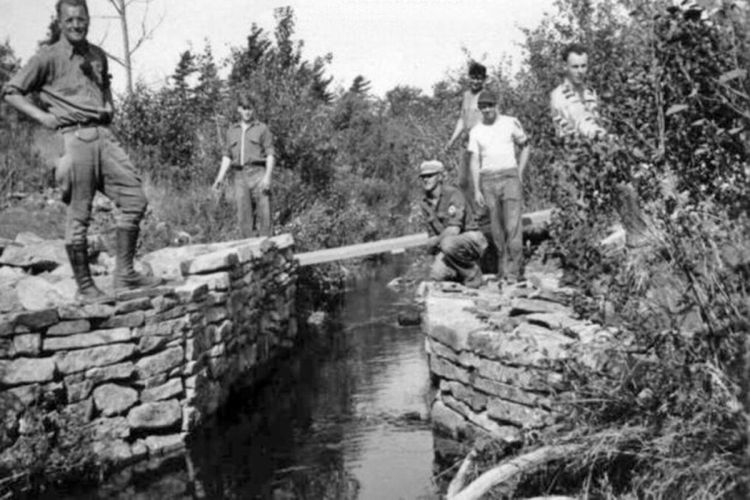ACADIA NATIONAL PARK — Historic hiking trails in Acadia National Park and surrounding communities – about 117 miles of them – were added last Friday to the National Register of Historic Places, which is administered by the National Park Service.
The trails, most of them within the park, are officially listed as the Mount Desert Island Hiking Trail System.
Several factors make the trails historically significant and worthy of preservation. Some of them began as paths taken by mid-19th century American landscape painters such as Frederic Church, Thomas Cole and others associated with the Hudson River School movement.
“When they came and painted some of those very well-known views of Acadia, they really helped draw national attention to the beauty of the area,” said Michael Goebel-Bain, historic preservation coordinator at the Maine Historic Preservation Commission
“There was already some tourism in the area, but they helped bring in even more tourists, so more people were using the trails.”
Some early trails were built by village improvement societies on MDI.
“They created stone steps and walkways that were becoming a pretty intricate system across the island,” Goebel-Bain said.
And some of those community trails led, quite literally, to the creation of trails in Acadia.
Some of the park’s trails were built by laborers in the Civilian Conservation Corps, a federal work relief program in the 1930s and early 1940s that was a major part of President Franklin D. Roosevelt’s New Deal.
“There was a pretty consistent vision with the building of the trails and some of the other architecture within the park that really comes through,” Goebel-Bain said. “There are some subtle differences, but overall, a fairly uniform pattern.”
Among those who were instrumental in securing recognition for the trail system’s historic significance were Gail Gladstone, Acadia’s cultural resource program manager, and Gary Stellpflug, the park’s trails foreman.
“The trails are related to the history of the founding of the park,” he said, adding that the conditions that come with inclusion on the National Register are “another set of guiding principles for us to use when we contemplate whatever rehabilitation we need to do.
“Getting on the National Register is the culmination of years of studying and gathering data and working with other people. So, hats off to everybody involved.”
The yearslong effort involved extensive research to document the trails’ historic significance.
Several buildings and sites in Acadia were already listed on the National Register: the original Abbe Museum at Sieur de Monts Spring, Bass Harbor Head Light, Blackwoods and Seawall campgrounds, and the carriage roads, bridges and gatehouses.
The National Park Service calls the more than 96,000 places now listed on the National Register “a treasure trove for professional historians, scholars and anyone curious about American history.”
Send questions/comments to the editors.



Success. Please wait for the page to reload. If the page does not reload within 5 seconds, please refresh the page.
Enter your email and password to access comments.
Hi, to comment on stories you must . This profile is in addition to your subscription and website login.
Already have a commenting profile? .
Invalid username/password.
Please check your email to confirm and complete your registration.
Only subscribers are eligible to post comments. Please subscribe or login first for digital access. Here’s why.
Use the form below to reset your password. When you've submitted your account email, we will send an email with a reset code.